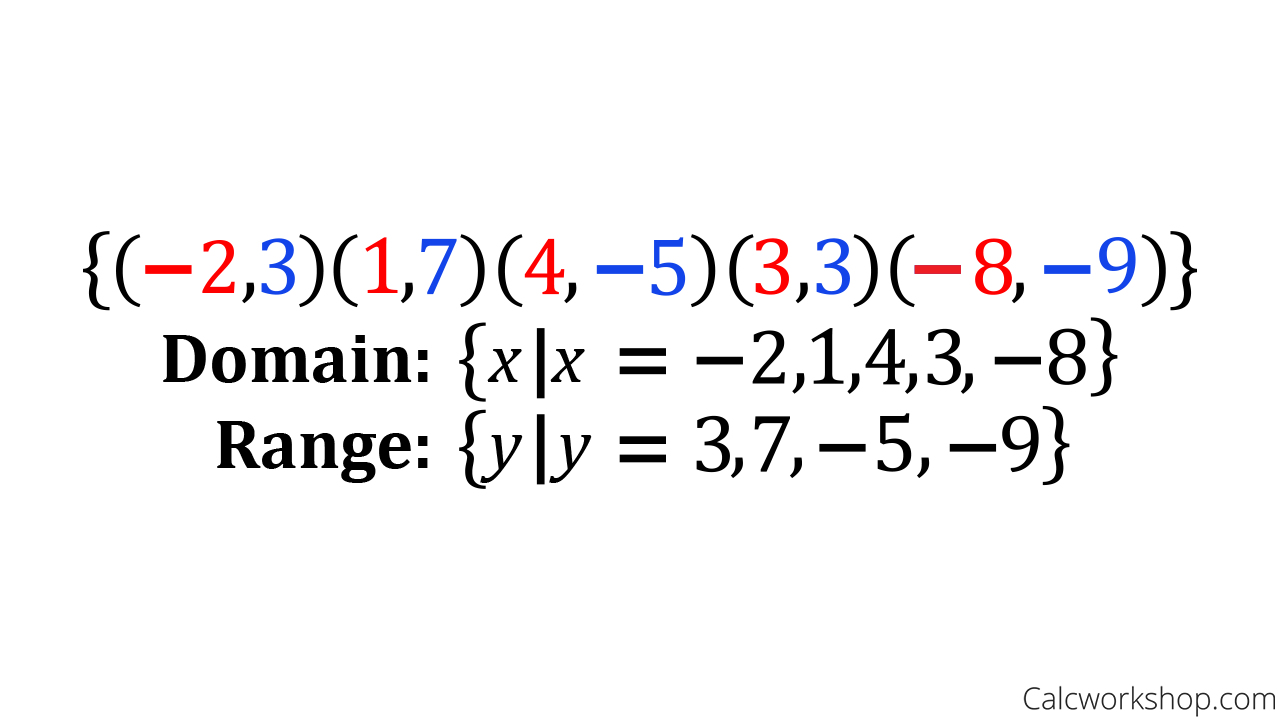A set is a collection of elements, and we build a set by describing what is in the set.

Jenn, Founder Calcworkshop®, 15+ Years Experience (Licensed & Certified Teacher)
So when we want to list the members in a set we use set builder notation. It is a clear way to organize variables and elements that are included in our set and one of the most common methods for describing domain and range.
As we will quickly see, set-builder notation is very easy to use and apply when finding the domain and range of a relation, either as a set of ordered pairs or a mapping diagram.
But we are going to broaden our scope to determining both the domain and range of graphs, where we will need a new perspective when finding elements for each set.
As we already know, the domain is the set of all first elements or x-values. This means we are going to read our graph from left to right, just like we read a book, and determine all the x-values that work for our graph.
Similarly, the range is the set of all second elements or y-values. So we are going to read our graph from bottom to top (i.e., negative y-axis to positive y-axis) and find all the y-values that are allowed for our graph.
So basically, I want you to think of the domain as the width and the range as the height. This will help to keep things straight.

Example of a Relation in Set Notation
Together we are going to find the domain and range for various functions such as:
- Linear Functions
- Absolute Value Functions
- Square Root Functions
- Rational Functions
- Greatest Integer Functions
But, why do we care about finding the domain and range?
Well in our continued study of functions it is going to be imperative that we only use values that “work”. And as Math is Fun nicely states, the domain is the set of all values that go into a function, so for a function to work we need to determine what values are acceptable.
This means we need to exclude any value that causes our function to fail:
- Denominator cannot be zero
- Can’t take the square root of a negative number
- Can’t find the logarithm of a negative number
Set Notation (How-To) – Video
Get access to all the courses and over 450 HD videos with your subscription
Monthly and Yearly Plans Available
Still wondering if CalcWorkshop is right for you?
Take a Tour and find out how a membership can take the struggle out of learning math.